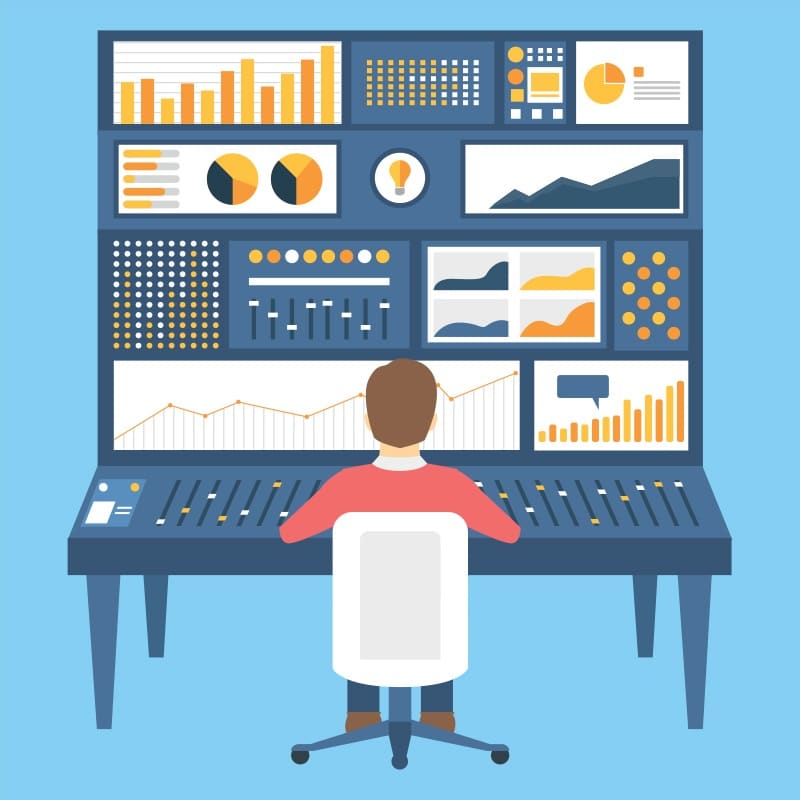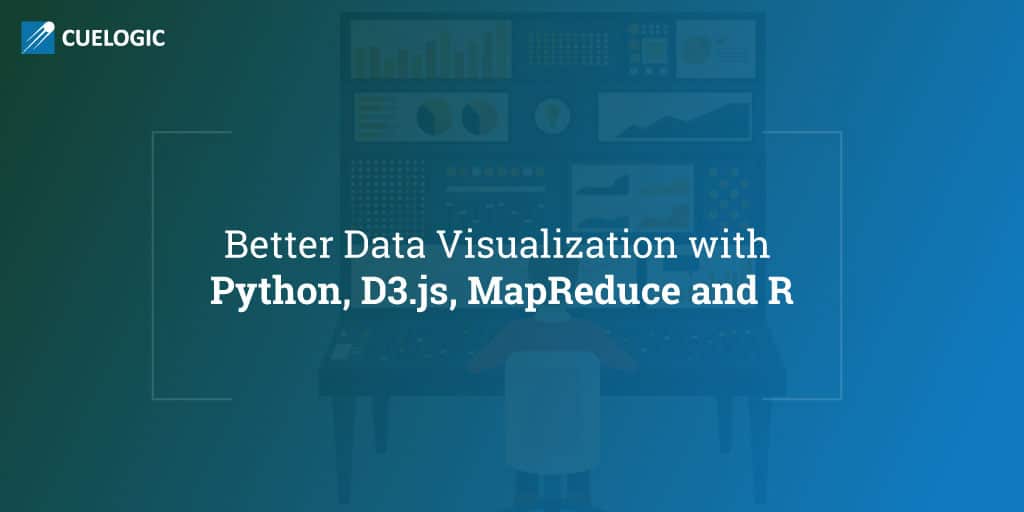
The art and practice of visualizing data is becoming ever more important in bridging the human-computer gap to mediate analytical insight in a meaningful way. – Edd Dumbill, California based technologist, writer and programmer.
To make sense of data such that insights and patterns are instantly revealed is no small task. Data visualization is nothing less than art and plays an important role in data analysis. Presented either in graphical form or pictures, it adds effectiveness and purpose to data. Visuals certainly has its merits. The general audience understands and communicates better when exposed to visuals, as compared to plain content. A combination of design, coding, web development and a strong database, data visualization is a mix of various disciplines.
Python is an ideal language for implementing data visualization, equipped with its own visualization libraries like Matplotlib and Seaborn. Yet there are other visualization tools that work wonders with Python. We summarize how Python’s effectiveness as a data visualization tool can improve manyfold with the inclusion of D3.js, R and MapReduce.
Refer to this link for an illustration of how Python can help create cool data graphics with its own visualization library, Matplotlib. Widen your knowledge about Pandas, the Python data analysis library, and know how it can work wonders, through this link.
Learn more about Python’s role in data visuals through this video link: Data Analysis & Data Visualization in Python
Freedom and Scale: D3.js
By visualizing information, we turn it into a landscape that you can explore with your eyes, a sort of information map. And when you’re lost in information, an information map is kind of useful. – David McCandless, British data-journalist.
D3.js, short for ‘Data Driven Documents’, combines multiple capabilities of CSS3, SVG and HTML5 to make interactive visuals.
Attaching your data to DOM (Document Object Model) elements adds much-required structure to data. DOM is a cross-platform and language-independent convention for representing and interacting with objects in HTML, XHTML and XML documents. DOM is the key for data binding in web page elements.
D3.js is best recommended for the absolute scale it allows in building a data framework of your choice. Packed with features, rich in interactivity and beautiful to look at, a possible turnoff is compatibility. Only browsers beginning from Internet Explorer 9 are compatible with this tool.
D3.js is ideal when a webpage is involved in data interaction. After all, great data visualization needs to be seen too. What better platform than the Internet and websites to view data. Flexibility is another D3.js attribute, variety in data representation is an asset. So is the built in functionality, that simplifies the developer’s job. That is why D3.js will always be a strong JavaScript library for making high quality, interactive data visualization.
To know more about the magic of interaction in data visualization, visit this link and click on each chapter for a detailed, step-by-step account of creating various data visuals in D3.js.
Get important pointers on how to visualize data in D3.js through this video link: Data Visualization in D3.js
Neat & a flair for colour: R
‘Infographics’ are a trend. It may eventually fade away, though I don’t see it happening over the next 5 years. But a thing that will stay here forever is the need for data visualization. – Uldis Leifert, CEO, infogr.am
R, as an environment and language is also known for applying advanced statistical methods. But its main strength is data visualization. Aligning with Python, a language with a natural flair for mathematical, scientific and statistical data, makes R a formidable data visual companion.
The graphics quality in R supplements Python uncomplicated neat structure. Data representation is high quality, can be reproduced without any decline in clarity. Publication-friendly is another tag that goes well with R. Bar graphs and histograms are a specialty in R, with vivid colour spreads.
Line plots, venn diagrams, density plots, pie charts and scatter plots are also suitably represented with impressive clarity. For sheer variety and texture, there is just no beating R in data visualization.
Two primary tools add to R’s great performance in visualizing data. A precise and clear marking of a plotting system is what makes ggplot2 tick. With ggplot2, you can create almost every type of graph. A drawback is the absence of interactivity. Then there are html widgets that is fully interactive, just the right tool for the web medium.
Integrated graphics over which you can exercise total control is another R advantage. From low-level graphics like base and grid to high-level stuff like lattice, R is an all-round data visualization companion to Python’s sturdy structure.
Check this link out to know more about how a detailed graph was created using the R tool, ggplot2. The example also goes on to explain, how D3.js is best used in creating top-quality graphics, illustrated here with its blending on R.
To learn about creating various data visuals, from histograms, scatterplots to matrices in R, check this video link out: Data Visualization in R
Advanced as it gets: MapReduce
There is a magic in graphs. The profile of a curve reveals in a flash a whole situation — the life history of an epidemic, a panic, or an era of prosperity. The curve informs the mind, awakens the imagination, convinces. – Henry D. Hubbard, National Bureau of Standards, 1939
Visual data has found a permanent space in everyday devices like smartphones and in key areas like health-related devices. This is where data visualization can be very handy, depicting patterns that are otherwise is hard to find. Talk of large-scale visualization systems and MapReduce can be mentioned as a scalable, light framework. Creating heat maps from NASA satellite data is how high-end MapReduce can go.
MapReduce can help personalize data and represent it, by counting numerous chunks of data separately. Hadoop plays a major role here in absorbing and handling data. It is in Big Data that MapReduce is most resourceful. Python can avail the benefit of this characteristic by systematically breaking down data chunks. This will result in easier data interpretation and more clarity in visual representations.
There will be other programming models, libraries and software environments that will aid Python in better data visualization in the time to come. We chose the above three for the varied elements they bring into the critical field of visualizing information. To conclude, we can only agree with the Uldis Leifert quote mentioned in this article, that data depiction mediums may change, but data visualization is here to stay.
